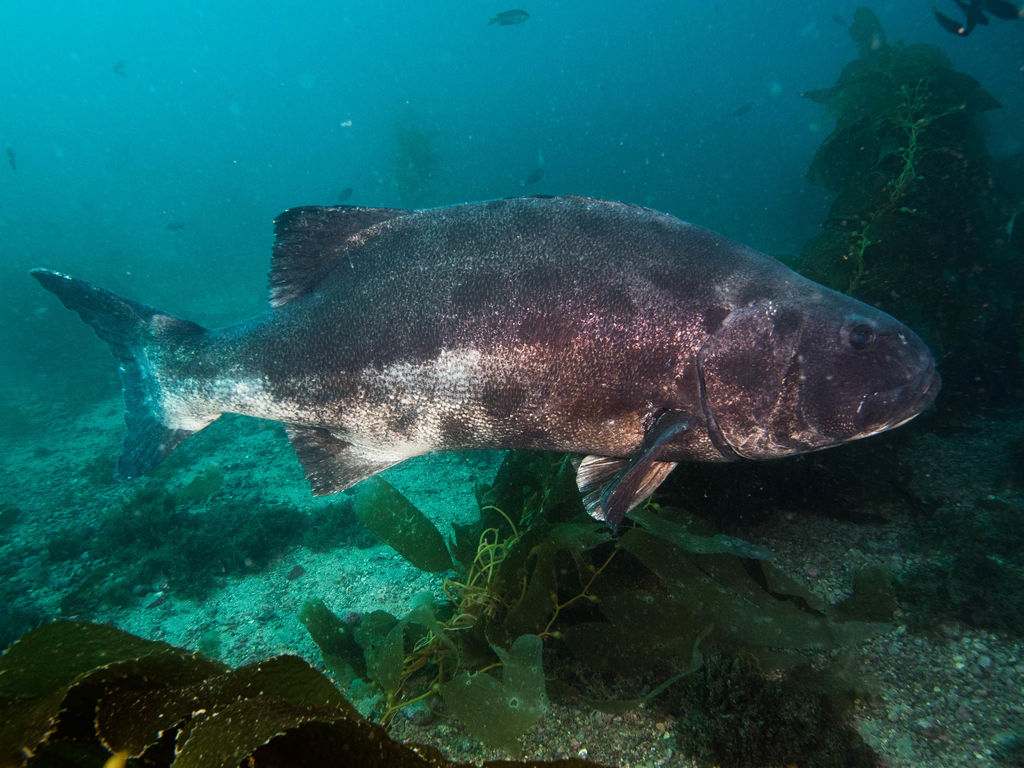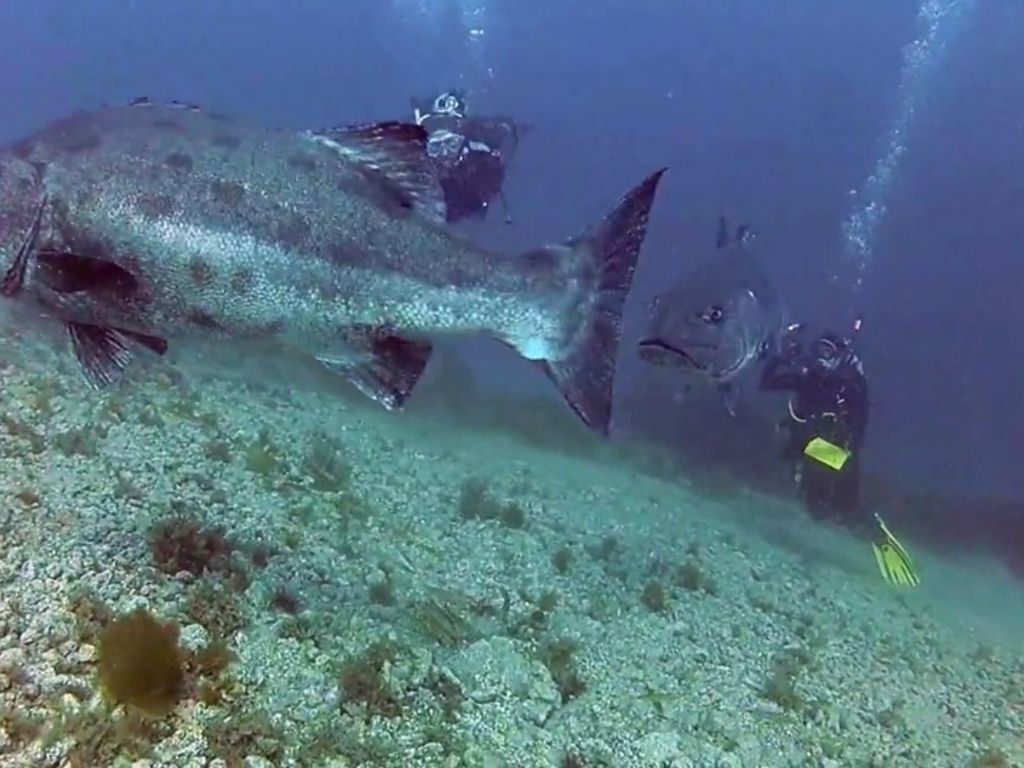Spot the Fish Project Searches for Citizen Volunteers

Each gigantic black sea bass has a distinctive spot pattern, and marine biologists hope a raft of citizen scientists will help them catalog the big, friendly fish. The “Spotting Giant Sea Bass” project is not only recruiting divers to provide clear photographs of the fish’s sides, it’s using pattern-recognition software developed to read star constellations in order to identify individual fish. The name of the project and the fish is no exaggeration either; black sea bass are known to grow to over 7 feet in length, weigh more than 500 pounds, and live longer than 72 years.

The big bass are found off Alta and Baja California, and especially off the northern Santa Barbara Channel Islands. Two UCSB undergrads, Katelin Seeto and Conner Jainese, studied photographs of dozens of these bass over time and discovered that the big fish have unique spot patterns, a finding reported in the June 2018 issue of the Bulletin of the Southern California Academy of Sciences with Prof. Milton Love and researcher Mary M. Nishimoto. With that discovery and the constellation algorithm, photographs will enable the spotting project to answer questions about where and when the slow-moving fish roam, and the population of a sea creature slowly recovering from being overfished in the 1980s. The giant sea bass is listed as critically endangered by the International Union for Conservation of Nature.
Marine biologists Douglas McCauley and Milton Love of UCSB, and researchers from CalState Northridge and Long Beach, and Scripps Institution of Oceanography are taking the lead on the spotting project, with support from the Aquarium of the Pacific, Santa Barbara Channel Marine Biodiversity Observation Network, and Benioff Ocean Initiative. Sign up at spottinggiantseabass.msi.ucsb.edu.


